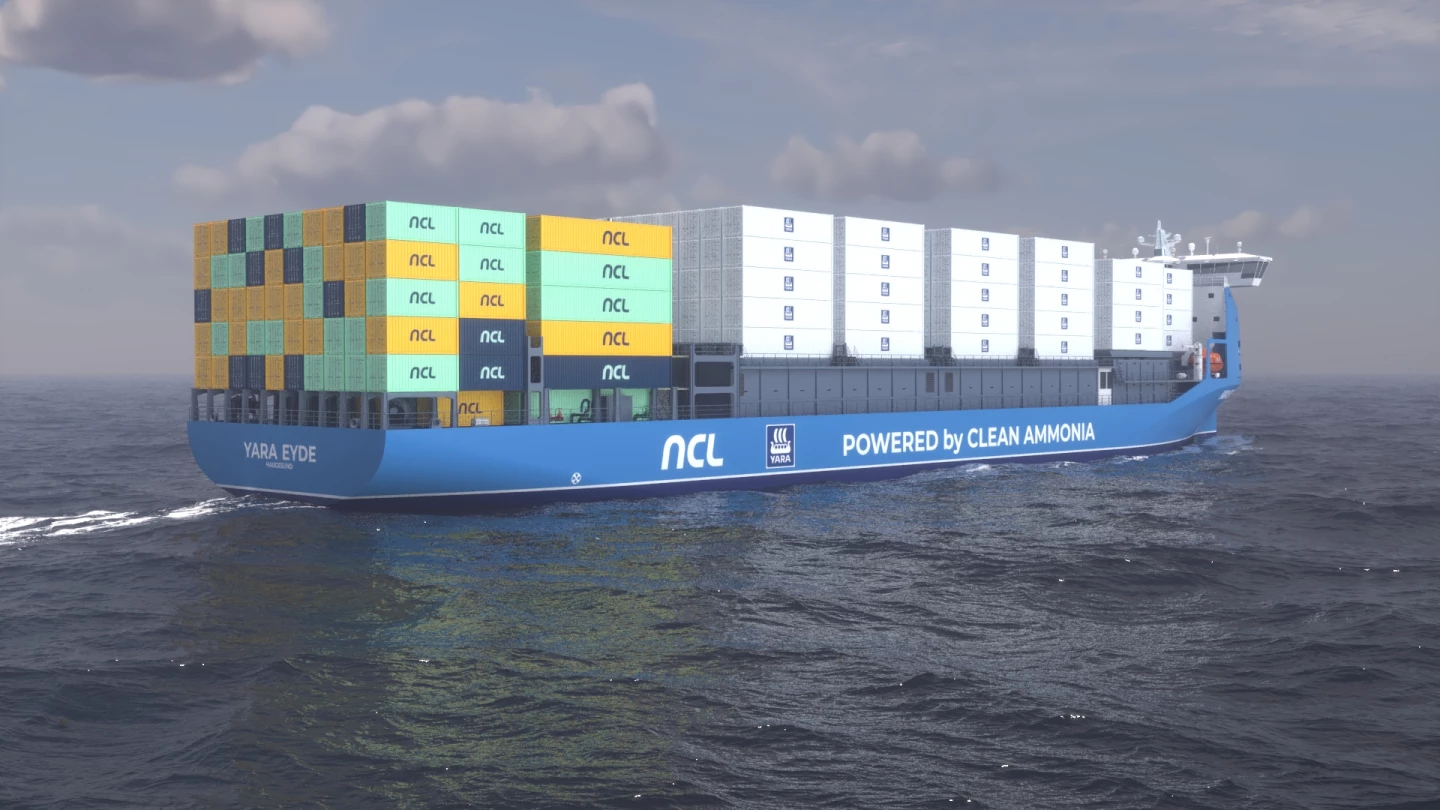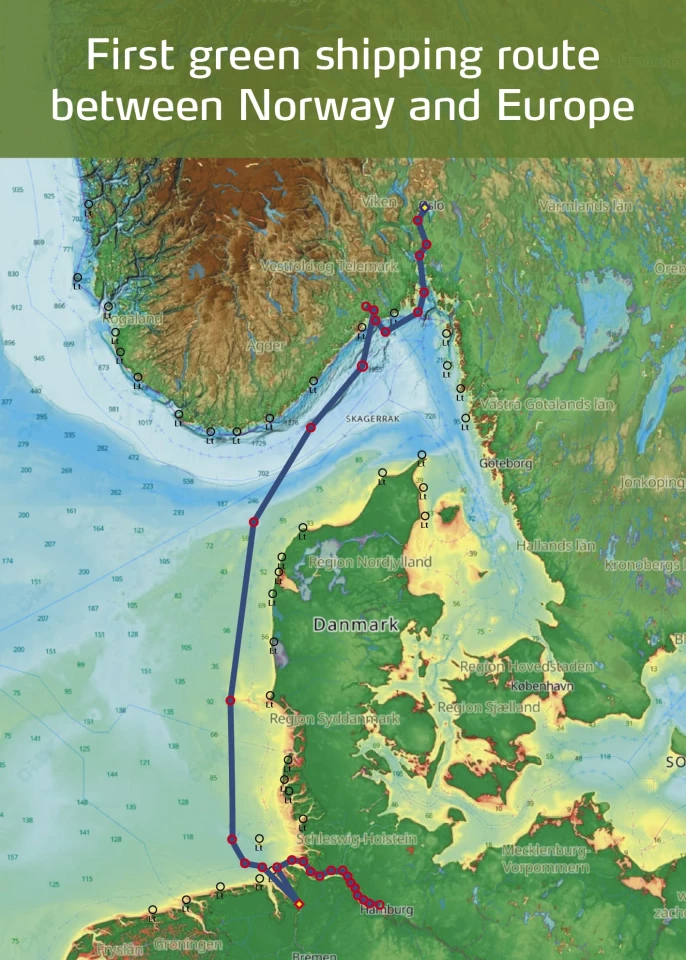Green ammonia offers a solution to one of the hardest tasks in decarbonization: replacing diesel in large ships. Yara is stepping forward with a commitment to launch the world's first clean ammonia-powered container ship, ready for service in 2026.
Marine diesel is an incredibly convenient energy source for great big ships, storing lots of energy and being easily available whichever port you pull into. But while shipping is a relatively efficient way to move goods in bulk, it's also responsible for somewhere between 1.7 and 3% of global CO2 emissions, depending on who you ask, and it'll need to be cleaned up in the race to zero.
Batteries are a non-starter in large marine applications; they're too big and too heavy, and they just don't carry enough energy. Even hydrogen, as a liquid or a gas, can't carry enough power to push these hulking ships far enough through the water to make them practical for most applications. Methanol offers a fairly accessible transitional step, but it'll never be a totally green fuel, so if humanity is to be carbon-free by 2050, it's a 30-year dead end.
Which leaves ammonia as a leading option for clean shipping. It's far from a perfect solution; diesel still carries twice as much energy by weight and about two and a half times as much by volume. But ammonia can be burned cleanly in a combustion engine, provided the process is well managed to avoid producing nitrous oxides, it delivers enough energy to cover some shipping routes, and it's a widely produced chemical for agricultural use, so it's relatively accessible even today.

Norwegian chemicals manufacturer Yara shipped somewhere around 3.8 million tonnes of green or blue ammonia in 2022, which makes it fairly clear why it's interested in getting the ball rolling on ammonia-powered shipping. Yara International has partnered with its subsidiary Yara Clean Ammonia and North Sea Container Line to commission what it says will become the world's first ammonia container ship.
The Yara Eyde will be a relatively small ship next to some of the container-hauling behemoths out there, and it's also set to run a fairly short route, hopping back and forth between Norway and Germany. Its two most distant destination points, Oslo and Hamburg, are only about 442 nautical miles (818 km / 508 miles) apart by ship, so the ship's reduced fuel range shouldn't create too much of an issue.
Yara and North Sea are establishing a joint venture to build the ship, with the help of a US$3.7-million grant from Norway's Enova climate & energy funding organization. The joint venture aims to focus entirely on ammonia shipping, building more vessels after the Yara Eyde launches in 2026.

The ship is expected to eliminate 11,000 tonnes of CO2 emissions annually, while giving a range of manufacturers the ability to decarbonize their international logistics chains.
“To succeed in decarbonizing shipping, low-emission technologies must be brought to commercial scale within the next decade,"says Magnus Krogh Ankarstrand, President of Yara Clean Ammonia, in a press release. "It is imperative that carriers are incentivized to choose low-carbon fuel.”
"We see an increasing demand from cargo owners to reduce emissions. Yara Eyde offers competitive and emission-free logistics to cargo owners," says Bente Hetland of North Sea Container Line. Check out a short video below.
Source: Yara








